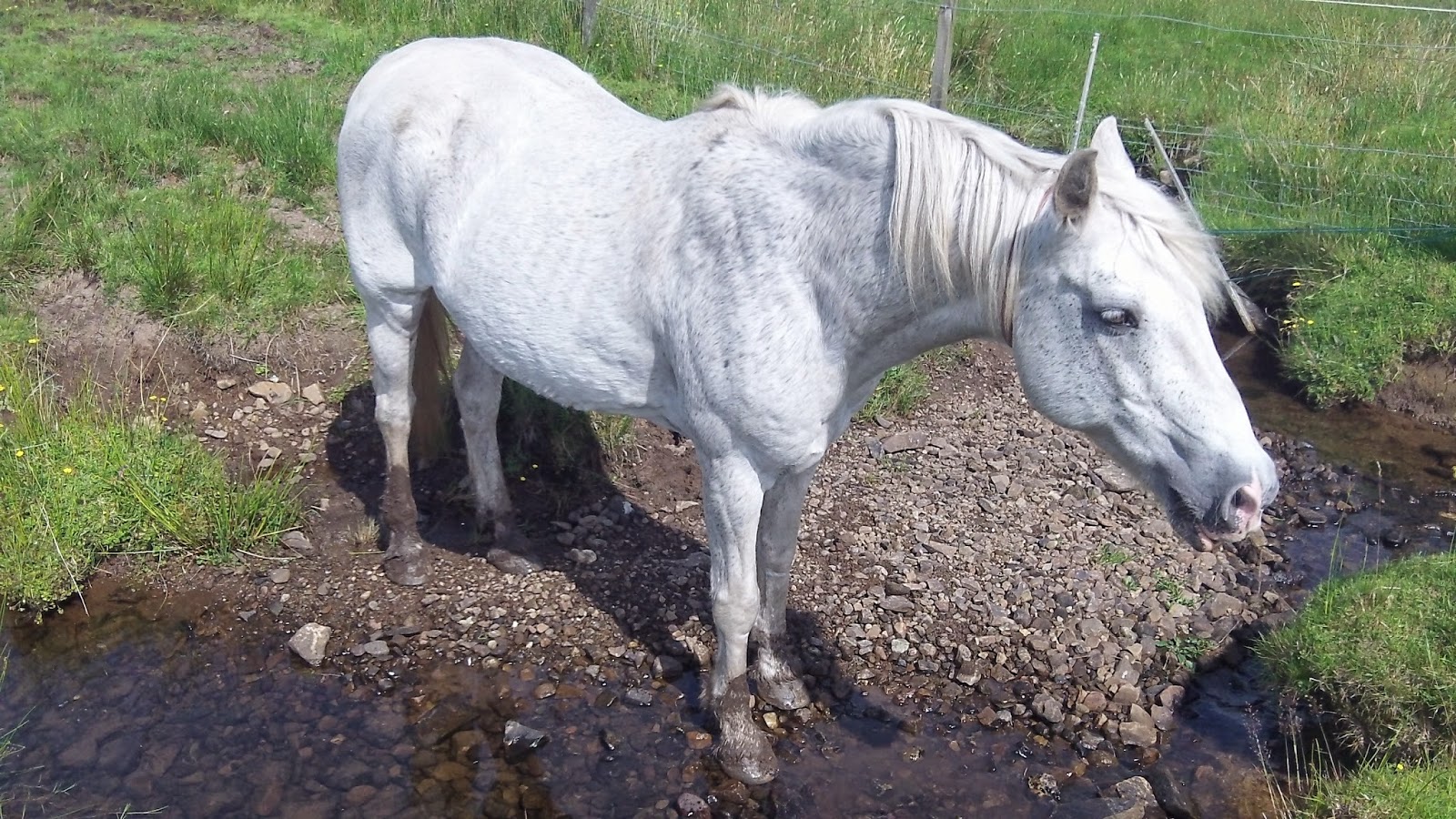I'm awaiting blood test results, but the behavioural changes so far are interesting:
- He is interacting much more with the other horses - mutual grooming with his old pal Paddy, and even playing nippy games, which I haven't seen him do in years
- He is more alert and responsive, and keen to interact with people. A few people over the summer had called him 'bargy' - he simply wasn't paying much attention to his environment and was slow to respond. This included not noticing or reacting to people around him. His supposedly 'dominant' behaviour, 'not respecting' people etc. has been miraculously improved by medication...
- He is vocalising more, whinnying to the other horses
- He is muddy! He is rolling more
- Not behavioural, but he's put on weight and muscle tone is looking better.
The downward progression with Benson was very, very gradual. Improvement has been very quick. Apart from the obvious point - test your horse for Cushings if you see any small signs, this is another case where behaviour could easily be attributed to the horse having a 'bad attitude' in one way or another, when they are actually unwell.








